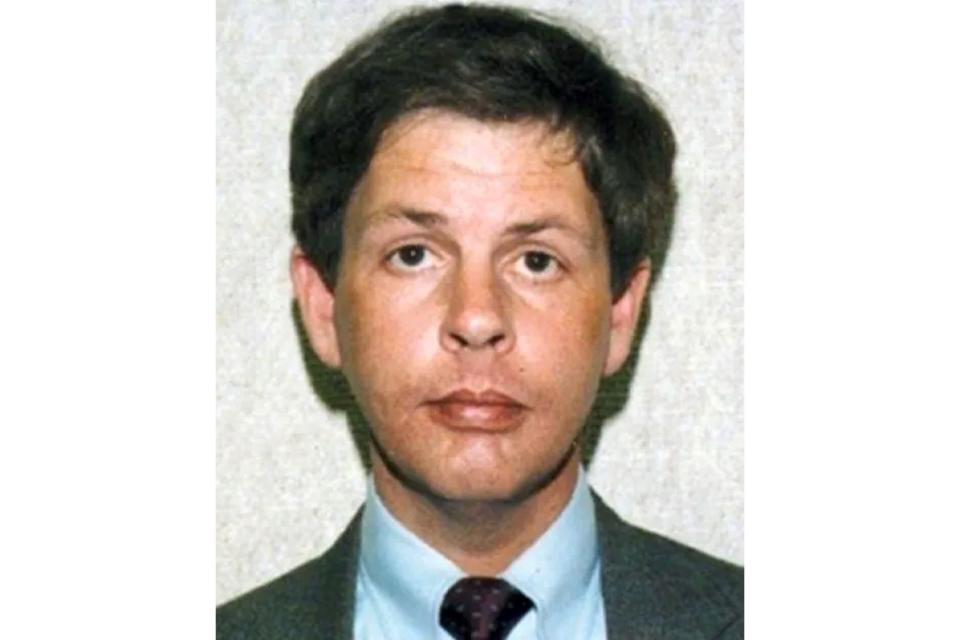Indiana Father Had 10,000 Fragments of Human Remains on His Property. Police Are Still IDing Victims
Police believe Herb Baumeister targeted gay men and buried at least 25 victims on his million dollar Indiana property in the 1990s

Indianapolis Police Department
Herb BaumeisterHerb Baumeister, a married father with three children, seemed like a normal and successful family man — until thousands of bone fragments were discovered on his property, unveiling that Indiana had one of the most infamous serial killers in its presence.
In 1996, Indiana officials began digging up the $1 million dollar property where Baumeister and his family lived. They made horrific discoveries: Hundreds — and then thousands — of bone fragments belonging to various missing men.
The remains are still being identified today, but authorities believe Baumeister — who they say lived a double life — picked up men at gay bars while his family was out of town, then brought them back to his Westfield, Ind., home where he murdered them and buried their remains on the 18-acre property.
Two years before the grisly discovery, Baumeister’s 13-year-old son found a human skull on the property, according to 1996 reporting by PEOPLE, and the teen showed his mother, Julie Baumeister. She then found the rest of the skeleton and confronted her husband, who told her there was no cause for alarm, because the bones were from a medical school skeleton, which was given to him by his late father, an anesthesiologist.
This explanation reportedly calmed Julie's nerves for the moment, but two years later, her biggest fears were realized when countless bone fragments were found on her and her husband’s property. Based on the remains, police estimate approximately 25 victims were buried at Fox Hollow Farm.
Less than two weeks after the remains were discovered, Baumeister died by suicide, The New York Times reported in 1996, before ever facing any charges in connection with the slayings. His suicide note did not mention the deaths or remains, Sgt. Kenneth C. Whisman told The Times.
Related: While Julie Was Away
The search for remains began after Julie filed for divorce and learned her husband was a suspect in the disappearances of many men, The Times reported. This is when she told authorities about the skull her son previously found, prompting the search. The majority of the bones were found in two dense areas of the woods, and some were partially burned, Julie’s lawyer, William E. Wendling Jr., told The Times in 1996.
Want to keep up with the latest crime coverage? Sign up for PEOPLE's free True Crime newsletter for breaking crime news, ongoing trial coverage and details of intriguing unsolved cases.
Police have now linked Baumeister to nine victims whose remains were found on his property located just outside of Indianapolis. He is also suspected of being the I-70 Strangler, who was responsible for the deaths of nine additional men and teens in the 1980s and 90s, The Indianapolis Star reported in 1998. Their strangled bodies were discovered dumped in ditches and remote areas in Indiana and Ohio, with the youngest being 15-year-old Michael Petrie, according to the newspaper.
“Our biggest question now is how he could have loved us and done this,” Julie told PEOPLE in 1996 about her husband’s crimes. “Happiness as we knew it is never going to return.”
Officials are still working to identify the “nearly 10,000 human remains recovered from Fox Hollow Farm,” the Hamilton County Coroner’s Office in Indiana stated. On Jan. 25, the coroner's office announced the identification of Manuel Resendez, whose remains were found on Fox Hollow Farm in 1996.

Hamilton County Coroner's Office
Manuel ResendezForensic experts are "continuing to process remains for DNA comparison," Hamilton County Coroner Jeff Jellison previously told PEOPLE.
In late 2022, Jellison asked family members of men who went missing in the Indianapolis area in the ‘80s and ‘90s to submit DNA samples to the coroner’s office to see if their loved one was a possible victim of Baumeister, USA Today reports.
One person who submitted their DNA was Eric Pranger. His DNA helped identify his cousin, Allen Livingston, as one of Baumeister’s victims, according to USA Today.
“I am a ball of emotion right now,” Pranger told the outlet. “I am happy and sad. Happy he was identified and sad that it happened.”
For more People news, make sure to sign up for our newsletter!
Read the original article on People.

